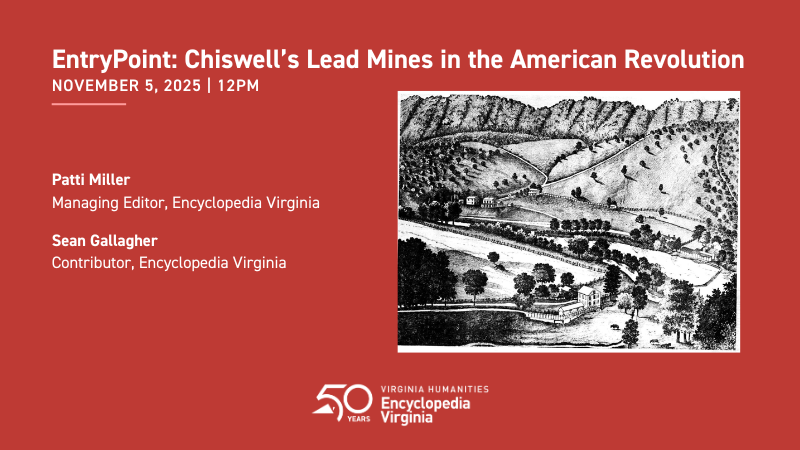I recently attended a living history event where instruction was to be given on "Bush fighting" or "Woods discipline", as it was called in the period. The entire enterprise consisted of comical fast paced wheeling in open order in an treeless field. Needless to say nothing of great value was offered or learned that day by participants in the exercise other than an insight into the frailties of man. It did however remind me of this great quote from North Carolina:
"Janet Schaw, ca. May-June 1775. Wilmingtown [North Carolina.]...
We came down in the morning in time for the review, which the heat made as terrible to the spectators as to the soldiers, or what you please to call them. They had certainly fainted under it, had not the constant draughts of grog supported them. Their exercise was that of bush-fighting, but it appeared so confused and so perfectly different from any thing I ever saw, I cannot say whether they performed it well or not; but this I know that they were heated with rum till capable of committing the most shocking outrages."
The standard European infantry practice in the early 18th century was the massed coordinated firing of well disciplined troops in close order in ranks three deep. These formations made the most out of the musket's ability to be reloaded quickly and to mount a bayonet, and were well suited to the open countryside of much of Europe.

Detail from the Review of the Norfolk Militia by David Morier, c.1759–63
Adam Stephen wrote a letter to John Hunter, 7/18/1755, discussing Braddock's Defeat at Fort Duquesne:
"In short, the Enemy obtained an easy and compleat Victory. The few independents and Virginians that were engaged behaved better and suffered much. There were but few of them engaged, as General Braddock had unhappily placed his confidence and whole Dependence on the Regiments. But his Excellency found to his woeful Experience, what had been frequently told him, that formal attacks & Platoon-firing never would answer against the Savages and Canadians. It ought to be laid down as a Maxim to attack them first, to fight them in their own way, and go against them light and naked. As they come against Us, creeping near and hunting Us as they would do a Herd of Buffaloes or Deer; whereas you might as well send a Cow in pursuit of a Hare as an English Soldier loaded in their way with a Coat, Jacket &c. &c. &c. after Canadeans in their Shirts, who can shoot and run well, or Naked Indians accustomed to the Woods".
John Jones described the behavior of Independent Company Soldier named Lucorney at Braddock's defeat; Jones "saw the prisoner [Lucorney] several times behind a Tree...fireing and watching his opportunity to fire upon the enemy." Andrew Holms said Lucorney "Struck upon a Tree making the Deponent understand that it was the proper method for the Troops to take for their defence."
What was the Indian method?
In the 18th century, "Bush fighting" or "the method of Ind'n Fighting" was adopted by both Americans and the British military to counter (and adopt) the ambush and encirclement tactics encountered in the heavily forested frontier when fighting Indians. I will avoid getting into the religious associations that permeated every aspect of Native life, and will attempt to keep this as concise as possible.
Map of the Battle of the Monongahela showing the encirclement of Braddock's Army by David Preston, from his excellent book "Braddock's Defeat" from a Mount Vernon post.
"James Adair's 1775 "HISTORY OF THE AMERICAN INDIANS" tells us that typically "The common number of an Indian war company, is only from twenty to forty, lest their tracks (should be discovered by being too numerous) but if the warring nations are contiguous to each other, the invading party generally chooses to out-number a common company that they may strike " although he also relates a story from 1747 of a very successful Mohawk party consisting of "two or three only" that operated in the Carolinas for four moons, killing over twenty Cherokees before being captured and killed by their pursuers who "formed a large semi-circle" from " then closed into a narrower compass" to locate them.
An ambush location was chosen (generally along a road, path, campsite and etc.), often with a predetermined distance when the party was to open fire, and then the war party would use trees and terrain to provide cover and concealment. The goal was surprise and shock, with the war party firing first, and then closing to encircle the confused group they are ambushing before a defense could be mounted.
"We take care to have the first shot at our enemies, and then they are half dead before they begin to fight." (as quoted by Christian Frederick Post in 1758)
Once the ambush began, firing and reloading occurred behind trees, and a "half Moon" or "half Circle" would be closed upon the party being ambushed.
"the Enemy indeavoured to inviron them, and had actually got them into a half Circle before the Deponents were aware upon which, and young Verdiman observing that two Indians had pointed their Guns, they, the Deponents, all retreated backwards with their Faces to the Enemy, and took to Trees." (Depositions Concerning Indian Disturbances in Virginia 1758)
"that before the Indians fired and Watts had returned the Fire on which an Indian fell, the Indians had got them into a half Moon, and that the Bullet shot by the Indian at Watts went between Watts’s Head and the Bark of the Tree he stood behind and beat of much of the Bark." (Depositions Concerning Indian Disturbances in Virginia 1758)
The war parties had leadership, but were not callous about casualties like 20th century communists sending waves of peasant conscripts to certain death. "They say of themselves, that every one of them is like a king and captain, and fights for himself." (Christian Frederick Post 1758). If the party being ambushed was able to fire first, put up a spirited defense that induced heavy losses, rapidly escaped, or counter attacked, the ambush was generally broken off (in a sort of slower break contact drill).
"In a very little Time after they heard the Indian War Whoop and a Gun fired upon which a running Fight began. That the Indians tryed to get them into a half Moon three Times which at last they effected, and that in the Engagement he saw two Indians fall. That at last the Enemies’ half Moon being broken, both Parties fled from each other." (Depositions Concerning Indian Disturbances in Virginia 1758)
Anglo Tactical adaptions
Detail from the 1757 Patt Walsh/Fort Edward horn showing aimed firing from trees and team loading.
Patt Walsh Powder Horn, 1757. Unidentified artist (American, 18th century) carved cow horn with glass, silver, and brass, Huntington Museum of Art, Huntington, West Virginia Bequest of Herman P. Dean.
James Smith's narrative illustrates the placement of two men per tree,
one of whom was to always have a loaded gun in order to provide a
"constant" fire.
"I collected ten of my old warriors, that I had formerly disciplined in the Indian way, went off privately, after night, and encamped in the woods. The next day, as usual, we blacked and painted, and waylayed them near Sidelong Hill. I scattered my men about forty rod [a rod is 5.5 yards or 16.5 feet] along the side of the road and ordered every two to take a tree, and about eight or ten rod between each couple, with orders to keep a reserve fire, one not to fire until his comrade had loaded his gun—by this means we kept up a constant, slow fire, upon them from front to rear"
Barton's Journal illuminates how soldiers on the Forbes expedition drilled to extend from column into a linear front capable of an "incessant" fire. The extended line would deny the enemy's ability to encircle the formation, and after six rounds were fired the men were to counterattack the aggressors to further break up the attack.
"Sunday, August 13th
At three O'clock the troops are led to the field as usual and exercised in this manner.
They are formed into four columns two men deep parallel to, and distant from, each other about 50 yards. After marching some distance in this position, they fall into one rank entire forming a line of battle with great ease and expedition. The two front men of each column stand fast & the next two split equally to right and left and continue alternately till the whole line is formed. They are then divided into platoons; each platoon consists of twenty men, and fire three rounds. The right hand man of each platoon beginning the fire and then the left hand man; and so on right and left alternately until the fire ends in the center. Before it reached this place the right and let are ready again. By this means an incessant fire is kept up. When they fired six rounds in this manner, they make a sham pursuit with shrieks and halloos in the Indian way, but falling into much confusion; they are again drawn up into line of battle and fire three rounds as before. After this each battalion is marched in order back to camp." (Barton, Thomas. "Journal of the Forbes Expedition" Ed. William A.
Hunter, The Western Pennsylvania Historical Society , Pittsburgh:
October 1971).
Having learned some very hard lessons in the French and Indian war, the British army instituted training to counter small unit ambushes in wooded terrain, further codifying those practices with the formation of permanent Light Infantry companies prior to the Revolution.
Lord Townshend’s Instructions for the Light Infantry in Ireland, 1772.
“-Rules and Orders for the Discipline of the Light Infantry Companies in His Majesty’s Army in Ireland.-*
“The Light Infantry Companies are always to be drawn up two Deep with a space of Two Feet between the Files. Marching in a Wood upon any Service of a Secret Nature, they are to be taught to lower their arms in two motions and carry them in a diagonal Position, with their hands on the swell of the firelock; and they are to shoulder in three Motions. They are to perform all Evolutions by Files and never to wheel any part of the Circle by Platoons or subdivisions much less by a larger Body. When marching through a Wood or any Strong Country by Files and ordered to form a Front to the Left, the Right Hand File is to face to the Left and the others to run up briskly and dress by it. If to form a Front to the Right, the Right Hand File is to face to the Right and the other Files are to form briskly to the Right of it; and then the Rear Rank of the Detachment becomes the Front, when a few Files are formed the Commanding Officer is to order an Irregular Fire to begin, and to Continue until the signal shall be given for Ceasing, It is to be particularly observed that each file has an entire dependence upon itself and that the Firelocks of the front and rear Men, are never to be unloaded at the same time, When the front Rank Man Fires, the Rear Rank Man is to make Ready and step up briskly before his Comrade, but is by no means to discharge his Firelock until the other has loaded, and then he is to step briskly before the Rear Rank man, and this method to be followed untill a signal shall be given for ceasing to Fire. This Mutual Defense and Confidence is one of the most Essential Principles of Light Infantry. The Men when in a Wood are to be taught to Cover themselves with Trees by placing the Right Foot about six inches behind the left, and presenting to the Right of the Tree, and after firing to step back two paces, and give Room to the Rear Rank man to come up to the same Tree and to fire alternately, according to the directions before mentioned. All Officers Commanding Companies, or any body of Light Infantry, are to fix upon signals for extending their Front to the Right or to the Left, or to both Flanks, or to Close to the Centre, to Retire, or to advance, and these signals must be made by a loud whistle, a posting horn, or some other instrument capable of conveying a sufficient sound to be heard at considerable Distance, and the stoutest of the Drummers is to be taught to sound these Instruments by directions from the Commanding Officer, who is to give the strictest Orders to the Men to be silent and attentive without which it is scarce possible that any action in a wood can be successfull."
Portions of the American Revolutionary army also practiced Woods maneuvers as well as standard infantry drill. In the orderly book of the 2d Virginia Regiment in the fall of 1775: “The Ajutant to proceed with Exorcise & Decipline of 1764, & for the present to Continue, that & Bring on the men in every part of it & Teach the Woods Exorcise one Day in a Week…men are to be Divided into Small Squads under proper officers to Learn the Exorcise the most Expert men to Join the Grand Squade – the Unarmed men may be taught to March &c. at all times when the Can Borrow arms to be Exorcising & Larning the Use of them.”
It would seem that experienced woodsmen (like the men in the Virginia Depositions Concerning Indian Disturbances in 1758) didn't use formalized commands or prompts to "tree all" for their defense and I will not belabor this text in an attempt to collect all of the variations in commands and methods, but the general practice seems to have been to extend a line in open order with pairs firing from behind trees to create a front that couldn't easily be encircled or outflanked. Although the commands and terminology may vary from 1755 to 1783 and from backcountry farmer to British Light infantryman, the general activity and method seems to have been the same.
Journal of Henry Muhlenberg, July 23 1776:
"Again in the evening, arrived a company of Riflemen or sharpshooters, form Reading on their march to Jersey. Most of them are native youngsters from in and around Reading who learned bush fighting like that of the Indians. They are also clad in Indian fashion and are armed with rifles and tomahawks.
Their outer shirts are shaggy, almost like the pictures of satyrs, fauns, or sylvan spirits of ancient times”
In 1777, a reluctant (Tory) 12th Virginia Rifleman serving under an 8th Virginia officer in an ad hoc rifle unit attempted to encircle and ambush a group of British soldiers of the 23rd in a cornfield with ironic results.
"we discovered a few of the Welch fusileers cooking at a barn in the middle of a large field of Indian Corn. Capt. Dark resolved to take them if possible, on which account he divided his men into 6 parties of 25 each, under the command of a Lieut and 2 Serjeants. The party on the left to which I belonged, he ordered to surround the field, which we did, but were discovered by those we thought to surprise, who were only a few of a party consisting of fifty that were out foraging. They drew up immediately and marched out of the field; upon which our Lieut and 4 of his men fired upon them, which they returned with a whole volley, and plyed us very warmly from among the trees, for some considerable time, untill the other parties came up and attacked them in the rear; whom they also gallantly repulsed and put to flight. The party I belonged to upon the approach of the rest, retreated; at which time I left them, and made the best of my way to the English camp."
The Fusileers' use of the cover and concealment offered by the tree line enabled them to escape the ambush and hold off the approach of the riflemen who were firing from the open field.
On July 29, 1775; Robert Washington warned his fellow Virginians:
"Let us not plume ourselves with this conceit, that we shall always have the bush to fight behind; for, in the different services of war in this Country, there will be passes to be guarded or forced; bridges to be crossed or defended; trenches to be guarded or formed; streets to be cleared; and sometimes squares to be formed: in all which cases, bushing it would be of little or no use; and to send undisciplined Troops on such service would be absurd indeed. The native courage of the Americans, and their knowledge of the woods, with an early use of fire-arms, has rendered them superiour in the woods to any Troops in Europe, and, if under regular discipline, might be as famous in the field. But it may be observed and said, we want men of knowledge in such cases to instruct us."
The training reforms led by Von Steuben as well as the massive amounts of military aid from the French government allowed our Continental Army to stand against the British forces in a decisive and professional manner. Although the use of the "Woods discipline" won some frontier battles like King's Mountain and bolstered American abilities in skirmishing as well as in campaigns against Indian foes, these small unit tactics were secondary to professional competency in winning the Revolution.
I'd like to thank Steve Rayner for his generous sharing of information on this topic through the years, reflected in several of the quotes above.























